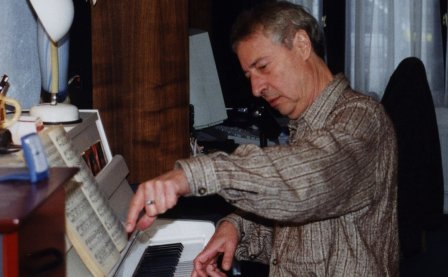It's difficult to write about music like this. I like it. I really like it. But there are only so many ways to describe experimental music when you're just a fan, not someone who's spent years studying this kind of music. Plus, you still have to make it a good read, something people who overanalyze experimental music seem to forget. So reviews of this kind of music usually fall into two categories: either academic over analysization, or some standard overwrought experimental review template to make it seem like you've spent years studying, complete with words that only English majors don't have to look up (all you have to do is fill in the song titles!). So I'm hoping to avoid those pitfalls and just talk about the damn music.
Which goes right out the window as soon as I look at the song titles. I'm sure as hell not typing those out again, so just scroll down a bit a look at them. How can I just talk about the music, when Mr. Whitman has made it painfully obvious that Multiples is just as much about the process as it is about the product? From the few interviews I've read, Whitman doesn't seem to be all that academic, but the packaging for Multiples, as well as the Antithesis and Schöner Flußengel EPs, begs to differ. I still don't think Whitman is as academic as his song titles and detailed explanations of how everything was recorded lead on though. I think he just really digs the process. Take that as you will, because I'm sure as hell not going into the whole process/product debate here.
I was a little disappointed when I first put this album on. The first song starts off good, with some processed hi-hat drones. But the second song really had me worried; it's full of random sweeps and bleeps that by the end of the song are kind of annoying. The fourth track also falls victim to a bunch of random squelches and bips; something that's interesting the first time, but really doesn't need to be listened to again. Though, to its credit, the song almost saves itself with a pulsating rhythm that appears half-way through.
But the last four songs, which consist of the bulk of the album (10:11, 6:50, 5:29, and 10:32 respectively), more than makes up for those minor missteps of the first few songs. Track 5 is a piece for "Yamaha Disklavier prototype, electric guitar, and computer" that wouldn't sound out of place as the soundtrack to sweeping shots of a Blade Runner-esqe future cityscape. Drums make their first appearance on the sixth track, creating a pounding tom rhythm amid the organ drones that swirl and sparkle around it. The last two songs (actually a two part suite with acoustic & electric guitar, music box, oscillator, and computer) are easily the highlights of the album. In the first part the acoustic guitar, music box, and oscillator all merge together in Whitman's wonderful ether to create a droning soundscape that engulfs the listener. The second part is all bleeps and bloops (the good kind this time) for the first half, and then slowly transforms into another magnificent ambient drone for the second half.
I realize that I probably fell victim to one (or both) of the pitfalls of writing about experimental music that I talked about earlier. Whatever. The point is, despite Multiples' weak start, Whitman has succeeded again in creating another fantastic record that people are probably going to spend way too much time analyzing than enjoying.
1. Stereo Music for Hi-Hat
2. Stereo Music for Serge Modular Prototype - Part One
3. Stereo Music for Serge Modular Prototype - Part Two
4. Stereo Music for Serge Modular Prototype - Part Three
5. Stereo Music for Yamaha Disklavier Prototype, Electric Guitar and Computer
6. Stereo Music for Farfisa Compact Duo Deluxe, Drum Kit
7. Stereo Music for Acoustic Guitar, Buchla Music Box 100, Hewlett Packard Model 236 Oscillator, Electric Guitar and Computer - Part One
8. Stereo Music for Acoustic Guitar, Buchla Music Box 100, Hewlett Packard Model 236 Oscillator, Electric Guitar and Computer - Part Two
More about: Keith Fullerton Whitman




